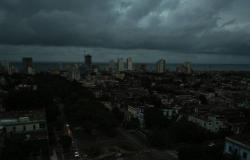En 2022, inflation in Morocco had experienced a spectacular surge, reaching heights not seen in more than two decades. Between soaring energy prices, disruptions in global supply chains and the drought which significantly impacted agricultural production, Moroccan households had been hit hard. Today, the storm seems to have passed.
Inflation has returned to normative levels, below 2%. According to Bank Al-Maghrib’s projections, it would remain close to this rate over the next eight quarters. And would even stand at 1.3% this year. However, the feelings of Moroccans are still the same: the price level remains high and the consumer still sees his purse shrinking visibly. At the market as at the butcher, labels continue to taunt the purchasing power of Moroccans.
At the market, the price of chicken, for example, is 26 DH per kilo; Lamb meat is close to 150 DH per kilo at the butcher. As for olive oil, it is slowly moving towards the luxury product category. These products, which we consume regularly, have become foods for budgetary consideration, and more so for low-income households. It is clear that the very structure of our economy, which is vulnerable to both internal and external shocks, plays a determining role in this downward resistance of prices. Thus, among breeders, we point the finger at the surge in livestock feed prices, a direct consequence of the international geopolitical situation, notably with the war in Ukraine and the escalation of the conflict in the Middle East.
Imports are therefore more expensive, and the cost is naturally passed on to the end consumer. For red meat, herds are suffering from the recurrence of droughts and the severe water stress that the Kingdom is experiencing, breeding costs are exploding and the local butcher has no choice but to align his prices. For its part, olive oil, once an accessible local product, has soared under the combined effect of low production and speculation. Added to all this is an often disorganized distribution chain, with a multiplicity of intermediaries who inflate prices along the way.
In short, despite favorable macroeconomic signals, the persistence of pressure on certain products highlights the vulnerability of the national economy to exogenous factors and climatic hazards. This means that the drop in inflation remains a statistical data, far removed from consumers’ daily lives.






